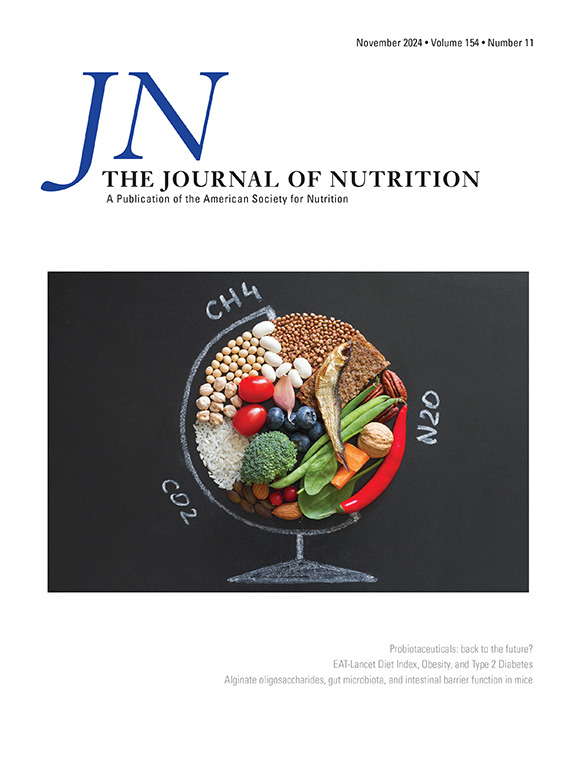蛋白质补充结合抗阻训练对健康老年人身体成分和身体功能的影响:系统综述和网络荟萃分析
IF 3.7
3区 医学
Q2 NUTRITION & DIETETICS
引用次数: 0
摘要
背景:到2050年,全球65岁以上人口预计将达到4.26亿。衰老与肌肉质量、力量和功能的逐渐丧失有关,导致肌肉减少症和身体残疾和死亡率增加等不良后果。抗阻训练和补充蛋白质等干预措施已显示出减轻这些影响的希望。目的:通过网络荟萃分析,确定蛋白质补充、抗阻训练及其组合对健康老年人身体成分和身体功能的比较效果。方法:我们按照PRISMA指南进行了系统评价和网络荟萃分析,并在PROSPERO注册(CRD42021226561)。我们纳入了随机对照试验,比较了50岁及以上参与者的蛋白质补充、阻力训练及其组合。数据摘自PubMed、Web of Science、Embase和Cochrane图书馆。使用Cochrane协作偏倚风险工具评估偏倚风险。结果:共纳入38项随机对照试验,涉及2610名受试者。蛋白质补充和抗阻训练联合干预显著改善瘦体质量(SMD, 0.44;95% CI, 0.05 ~ 0.95)。联合干预也显示肌肉质量显著改善(SMD, 1.49;95% CI, 0.11 ~ 2.67)。与对照组相比,联合干预(SMD, 2.74, 95% CI 0.76 - 4.74)和单独阻力训练(SMD, 2.53, 95% CI 0.29 - 4.84)显著改善了肌肉力量。与单独补充蛋白质相比,联合干预(SMD, 4.98, 95% CI 2.72至7.17)和单独抗阻训练(SMD, 4.52, 95% CI 2.30至6.64)显著改善了身体功能。结论:结合运动和补充蛋白质是改善老年人肌肉质量、力量和身体功能最有效的方法。应该考虑采用这种方法来增强这一人群的身体健康。未来有必要进行大规模试验来证实这些发现。本文章由计算机程序翻译,如有差异,请以英文原文为准。
Comparison of the Effectiveness of Protein Supplementation Combined with Resistance Training on Body Composition and Physical Function in Healthy Elderly Adults
Background
The global population of individuals over 65 y is expected to reach 426 million by 2050. Aging is associated with a progressive loss of muscle mass, strength, and function, leading to sarcopenia and adverse outcomes such as physical disability and increased mortality. Interventions such as resistance training and protein supplementation have shown promise in mitigating these effects.
Objectives
To determine the comparative effectiveness of protein supplementation, resistance training, and their combination on body composition and physical function in healthy older adults through a network meta-analysis.
Methods
We conducted a systematic review and network meta-analysis following PRISMA guidelines and registered it in PROSPERO (CRD42021226561). We included randomized controlled trials comparing protein supplementation, resistance training, and their combination in participants aged ≥50 y. Data were extracted from PubMed, Web of Science, Embase, and Cochrane Library. The risk of bias was assessed using the Cochrane Collaboration Risk of Bias Tool.
Results
A total of 38 randomized controlled trials involving 2610 participants were included. The combined intervention of protein supplementation and resistance training significantly improved lean body mass (standardized mean difference [SMD]: 0.44; 95% confidence interval [CI]: 0.05, 0.95) compared with protein supplementation alone. The combined intervention also showed significant improvements in muscle mass (SMD: 1.49; 95% CI: 0.11, 2.67). The combined intervention (SMD: 2.74; 95% CI: 0.76, 4.74) and resistance training alone (SMD: 2.53, 95% CI: 0.29, 4.84) significantly improved muscle strength compared with controls. The combined intervention (SMD: 4.98; 95% CI: 2.72, 7.17) and resistance training alone (SMD: 4.52; 95% CI: 2.30, 6.64) significantly improved physical function compared with protein supplementation alone.
Conclusions
Combining exercise and protein supplementation is the most effective method for improving muscle mass, strength, and physical function in older adults. This approach should be considered to enhance physical health in this population. Future large-scale trials are necessary to confirm these findings.
求助全文
通过发布文献求助,成功后即可免费获取论文全文。
去求助
来源期刊

Journal of Nutrition
医学-营养学
CiteScore
7.60
自引率
4.80%
发文量
260
审稿时长
39 days
期刊介绍:
The Journal of Nutrition (JN/J Nutr) publishes peer-reviewed original research papers covering all aspects of experimental nutrition in humans and other animal species; special articles such as reviews and biographies of prominent nutrition scientists; and issues, opinions, and commentaries on controversial issues in nutrition. Supplements are frequently published to provide extended discussion of topics of special interest.
 求助内容:
求助内容: 应助结果提醒方式:
应助结果提醒方式:


